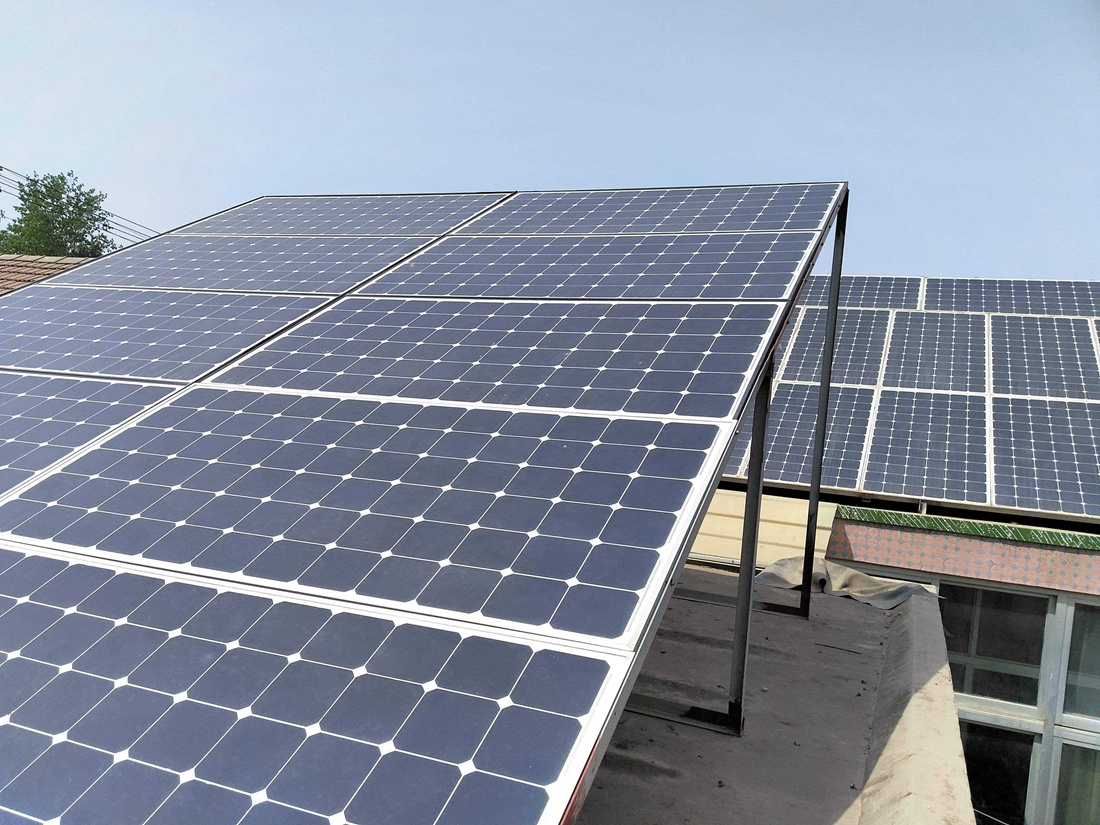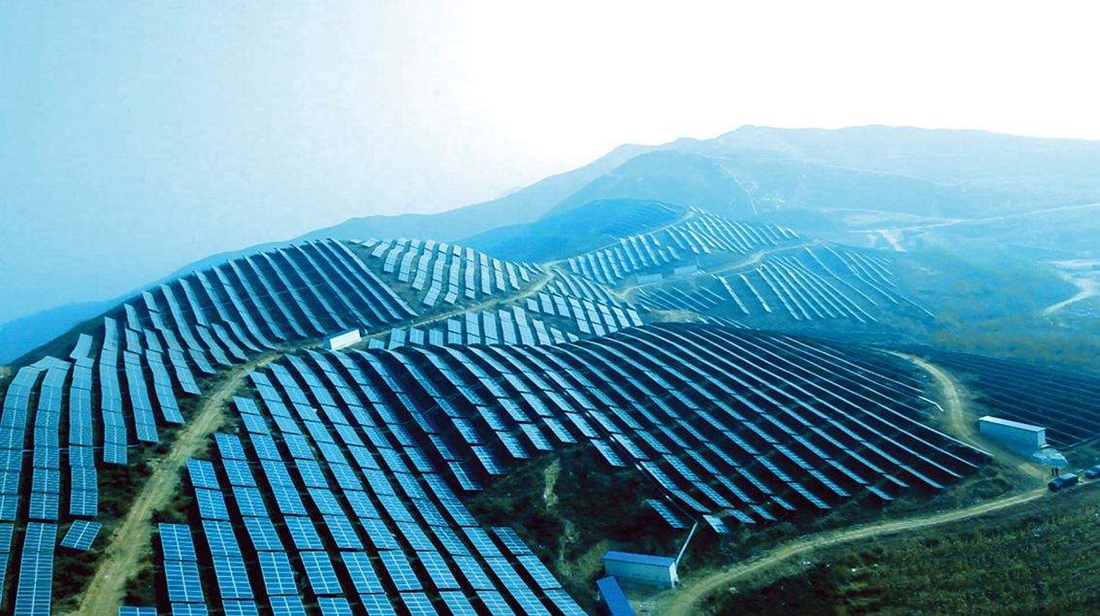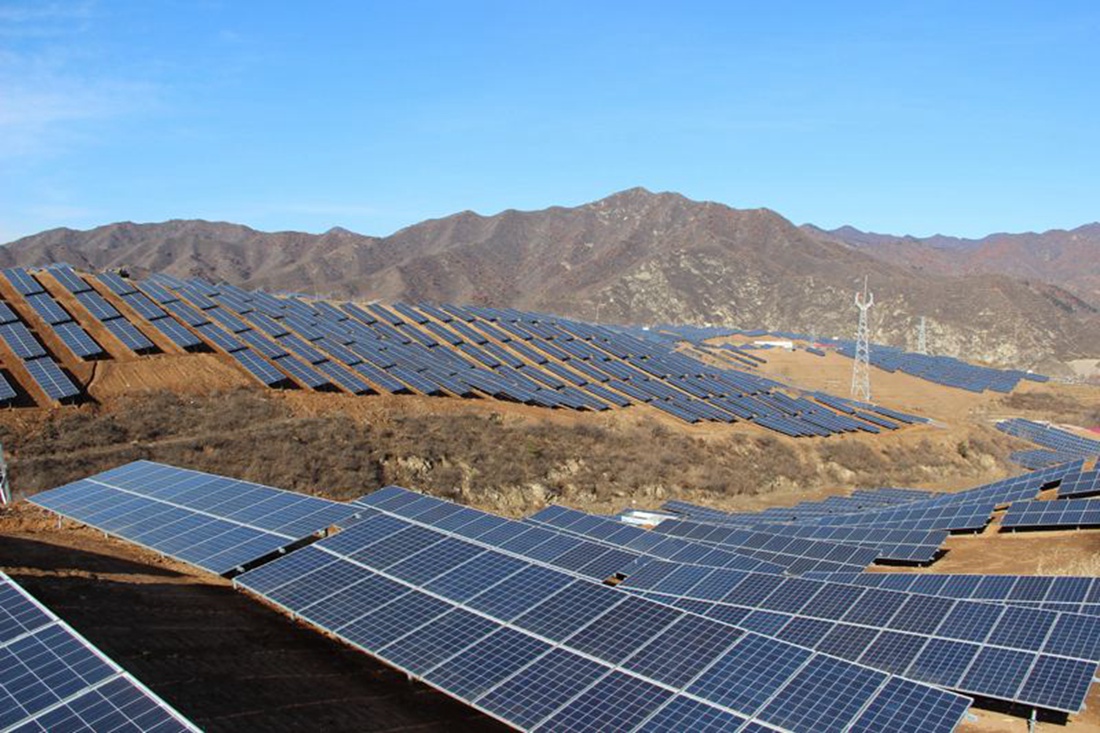Введение
What is photovoltaic power generation? Photovoltaic power generation is a technology that uses the photovoltaic effect at the semiconductor interface to directly convert light energy into electricity. Solar cells are connected in series and then encapsulated and protected to form large-area solar cell modules, which, together with power controllers and other components, form a photovoltaic power generation device.

The principle of photovoltaic power generation
The main principle of photovoltaic power generation is the photoelectric effect of semiconductors. When a photon shines on a metal, its energy can be absorbed by an electron in the metal, and the absorbed energy of the electron is large enough to overcome the internal gravitational force of the metal to do work and leave the metal surface to escape and become a photoelectron. Silicon atoms have four outer electrons, if the pure silicon is mixed with atoms that have five outer electrons, such as phosphorus atoms, it becomes an N-type semiconductor;
If the pure silicon is mixed with atoms that have three outer electrons, such as boron atoms, it forms a P-type semiconductor. When P-type and N-type are combined together, the contact surface will form an electric potential difference and become a solar cell. When sunlight shines on the P-N junction, holes move from the P-pole region to the N-pole region and electrons move from the N-pole region to the P-pole region, forming an electric current.

The photoelectric effect is the phenomenon that light causes a potential difference between different parts of an inhomogeneous semiconductor or semiconductor-metal bond. It is firstly, the process of conversion of photons (light waves) into electrons and light energy into electrical energy; secondly, the formation of voltage process.
Process
Polysilicon is made into wafers to be processed after the process of ingot casting, ingot breaking and slicing. The P-N junction is formed by doping and diffusing trace amounts of boron and phosphorus on the wafer. Then screen printing is used to print the finely matched silver paste on the wafer to make the grid line, and after sintering, the back electrode is made and an anti-reflection coating is applied to the surface with the grid line, and the cell is made. The cells are arranged and combined into a cell assembly, which forms a large circuit board. Generally, the module is surrounded by an aluminum frame, covered with glass on the front side and electrodes on the reverse side.
With the cell assembly and other auxiliary equipment, a power generation system can be formed. In order to convert direct current into alternating current, a current converter needs to be installed. The generated electricity can be stored in batteries or fed into the public grid. The battery assembly accounts for about 50% of the cost of the power generation system, while the current converter, installation costs, other auxiliary components and other costs account for the other 50%.

Advantages and disadvantages of photovoltaic power generation
1. Advantages of photovoltaic power generation
Compared with the commonly used thermal power generation system, the advantages of photovoltaic power generation are mainly reflected in.
① no danger of depletion.
② safe and reliable, no noise, no pollution emissions outside, absolutely clean (no public health).
③ No restriction on the geographical distribution of resources, and the advantage of building roofs can be used; for example, areas without electricity, and areas with complex terrain.
④ Power can be generated and supplied locally without consuming fuel and setting up transmission lines.
⑤ High quality of energy.
(6) Emotional acceptance by users.
⑦ Short construction period and short time spent on energy acquisition.
2. Disadvantages of photovoltaic power generation
①The energy distribution density of irradiation is small, i.e., it has to occupy a huge area.
②The energy obtained is related to the weather conditions such as four seasons, day and night, and cloudy and sunny.
③The cost of power generation is high compared to thermal power generation.
④The manufacturing process of photovoltaic panels is not environmentally friendly.

System classification of photovoltaic power generation
1. Independent photovoltaic power generation
Independent photovoltaic power generation is also called off-grid photovoltaic power generation. It is mainly composed of solar cell module, controller, battery, and if it is to supply power for AC load, it also needs to be equipped with AC inverter. Independent photovoltaic power station including remote areas of the village power supply system, solar household power system, communication signal power, cathodic protection, solar street lights and other kinds of photovoltaic power generation system with battery can be operated independently.
2. Grid-connected photovoltaic power generation
Grid-connected photovoltaic power generation is the direct current generated by solar modules through the grid-connected inverter into AC power that meets the requirements of the utility grid and then directly connected to the public grid. It can be divided into grid-connected power generation system with battery and without battery.
Grid-connected power generation systems with batteries are dispatchable and can be connected to or disconnected from the grid as needed, and also have the function of a backup power supply for emergency power supply in case of grid outages. Grid-connected power generation systems with batteries are often installed in residential buildings; grid-connected power generation systems without batteries do not have dispatchability and standby power functions, and are generally installed in larger systems.

Grid-connected photovoltaic power generation has centralized large-scale grid-connected photovoltaic power plants are generally national power stations, the main feature is to transmit the generated energy directly to the grid, by the grid unified deployment of power supply to users. But this kind of power station investment, long construction period, covers a large area, has not been too much development. And decentralized small grid-connected photovoltaic, especially photovoltaic building-integrated photovoltaic power generation, due to the advantages of small investment, fast construction, small footprint, and strong policy support, is the mainstream of grid-connected photovoltaic power generation.
3. Distributed photovoltaic power generation
Distributed photovoltaic power generation system, also known as decentralized power generation or distributed energy supply, refers to the user site or near the site of electricity consumption configuration of smaller photovoltaic power supply system to meet the needs of specific users, to support the economic operation of the existing distribution network, or both to meet the requirements of these two aspects.
The basic equipment of distributed photovoltaic power generation system includes photovoltaic modules, photovoltaic square brackets, DC sink boxes, DC distribution cabinets, grid-connected inverters, AC distribution cabinets and other equipment, in addition to power supply system monitoring devices and environmental monitoring devices. Its operation mode is that under the condition of solar radiation, the solar cell array of PV power generation system converts the solar energy output into electrical energy, and sends it to the DC distribution cabinet through the DC sink box, and the grid-connected inverter inverts it into AC electricity to supply the building's own load, and the excess or insufficient electricity is regulated by connecting to the grid.

Отказ от ответственности: Содержащийся контент получен из Интернета, общедоступных веб-сайтов WeChat и других общедоступных каналов, мы остаемся нейтральными к взглядам в тексте только для информационных и коммуникационных целей. Авторские права на воспроизведенные статьи принадлежат первоначальным авторам и учреждениям, если есть какие-либо нарушения, пожалуйста, свяжитесь с нами, чтобы удалить.
Boland — новая энергетическая и энергетическая компания, которая сочетает в себе гидроэнергетику, энергию ветра, солнечную энергию и аккумуляторные батареи, чтобы предоставить вам высококачественные интегрированные решения для ветровой и солнечной энергии и систем хранения. Партнером Boland является компания CRRC, которая заключила контракт на проекты высокоскоростных железных дорог в Китае, и у нас есть относительно полная внутренняя цепочка поставок, сервисная сеть и превосходное качество продукции и технологии.
Boland Обеспечить EPC электростанции, инвестиции и приобретение электростанции.
Пожалуйста, не стесняйтесь обращаться к нам, если вам нужна техническая поддержка.
Моя электронная почта: marketing@boland-hydroturbine.com
Вашингтон: +8613923745989


